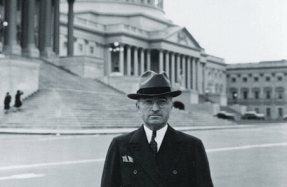THUNDERBOLT!



WORLD WAR II SAW THREE U.S. ARMY AIR FORCES FIGHTERS OF CONSEQUENCE: EVERYBODY’S FAVORITE, THE NORTH AMERICAN P-51; THE REMARKABLE LOCKHEED P-38; AND THE ABSURDLY LARGE REPUBLIC P-47.
Curtiss P-40s made meaningful contributions as well, but the big three owned the skies—the Lightning over the Pacific, the Mustang and Thunderbolt sharing the European theater. The P-40 bore the brunt of North African combat but turned out to be overmatched by Messerschmitt Me-109s and their experienced Luftwaffe pilots.
The P-47 Thunderbolt was the AAF’s most conventional WWII fighter. Other than the fact that it had a turbocharger, it was an evolutionary design like the P-40, with its antecedents in the 1930s. Yet it was built in greater quantities—15,683 units—than any other U.S. fighter.
In some respects, the P-47 dated back to 1931 and the earliest days of Alexander de Seversky’s struggling Seversky Aircraft Company—a firm that in 1939 would be renamed Republic. Was the Thunderbolt a Republic design, or did it owe much to the 1930s airplanes created by Russian émigré, air power advocate and entrepreneur de Seversky? The popular position is that Republic engineer Alexander Kartveli designed the P-47 on the back of the proverbial envelope during an overnight train trip to Wright Field in Dayton, Ohio. The most convincing proponent of de Seversky’s crucial role in the design was the late engineer and aviation historian Warren M. Bodie, whose book Republic’s P-47 Thunderbolt: From Seversky to Victory claims that de Seversky never got the credit he deserved.
Bodie argued that de Seversky was marginalized because of his difficult personality and lack of business acumen. Politics were said to have played a major role in the Air Corps’ focus on the Allison V12 engine, and well-connected Curtiss and its fighter proposals
You’re reading a preview, subscribe to read more.
Start your free 30 days





